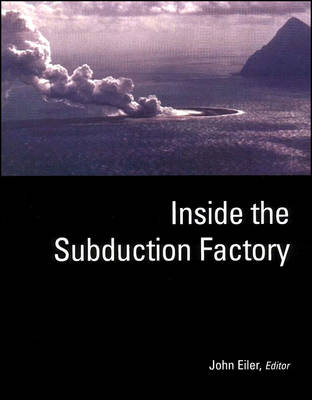
Inside the Subduction Factory
American Geophysical Union (Verlag)
978-0-87590-997-4 (ISBN)
- Lieferbar (Termin unbekannt)
- Versandkostenfrei innerhalb Deutschlands
- Auch auf Rechnung
- Verfügbarkeit in der Filiale vor Ort prüfen
- Artikel merken
Subduction zones helped nucleate and grow the continents, they fertilize and lubricate the earth's interior, they are the site of most subaerial volcanism and many major earthquakes, and they yield a large fraction of the earth's precious metals. They are obvious targets for study—almost anything you learn is likely to impact important problems—yet arriving at a general understanding is notoriously difficult: Each subduction zone is distinct, differing in some important aspect from other subduction zones; fundamental aspects of their mechanics and igneous processes differ from those in other, relatively well-understood parts of the earth; and there are few direct samples of some of their most important metamorphic and metasomatic processes. As a result, even first-order features of subduction zones have generated conflict and apparent paradox. A central question about convergent margins, for instance—how vigorous magmatism can occur where plates sink and the mantle cools—has a host of mutually inconsistent answers: Early suggestions that magmatism resulted from melting subducted crust have been emphatically disproved and recently just as emphatically revived; the idea that melting is fluxed by fluid released from subducted crust is widely held but cannot explain the temperatures and volatile contents of many arc magmas; generations of kinematic and dynamic models have told us the mantle sinks at convergent margins, yet strong evidence suggests that melting there is often driven by upwelling. In contrast, our understanding ofwhy volcanoes appear at ocean ridges and "hotspots"—although still presenting their own chestnuts—are fundamentally solved problems.
John Eiler is the author of Inside the Subduction Factory, published by Wiley.
Preface vii
Introduction: Inside the Subduction Factory
John M. Eiler 1
Section I: The Subducted Slab
Thermal Structure and Metamorphic Evolution of Subducting Slabs
Simon M. Peacock 7
Tracers of the Slab
Tim Elliott 23
Basic Principles of Electromagnetic and Seismological Investigation of Shallow Subduction Zone Structure
George Helffrich 47
Section II: The Mantle Wedge
Seismological Constraints on Structure and Flow Patterns Within the Mantle Wedge
Douglas A. Wiens and Gideon P. Smith 59
Rheology of the Upper Mantle and the Mantle Wedge: A View From the Experimentalists
Greg Hirth and David Kohlstedf 83
Experimental Constraints on Melt Generation in the Mantle Wedge
Glen A. Gaetani and Timothy L Grove 107
Mapping Water Content in Upper Mantle
Shun-ichiro Karato 135
Section III: Focus Regions
Volcanism and Geochemistry in Central America: Progress and Problems
M. J. Carr, M. D. Feigenson, L C. Patino, and J. A. Walker 153
n Overview of the Izu-Bonin-Mariana Subduction Factory
Robert J. Stern, Matthew J. Fouch, and Simon L Klemperer 175
Along-strike Variation in Lavas of the Aleutian Island Arc: Genesis of High Mg# Andesite and Implications for Continental Crust
Peter B. Kelemen, Gene M. Yogodzinski, and David W. Scholl 223
Section IV: Synthesis
Some Constraints on Arc Magma Genesis
Yoshiyuki Tatsumi 277
Thermal Structure due to Solid-State Flow in the Mantle Wedge Beneath Arcs
Peter B. Kelemen, Jennifer L. Rilling, E. M. Parmentier, Luc Mehl, and Bradley R. Hacker 293
| Erscheint lt. Verlag | 1.1.2004 |
|---|---|
| Reihe/Serie | Geophysical Monograph Series |
| Sprache | englisch |
| Maße | 224 x 274 mm |
| Gewicht | 939 g |
| Themenwelt | Naturwissenschaften ► Geowissenschaften ► Geologie |
| Naturwissenschaften ► Geowissenschaften ► Geophysik | |
| Schlagworte | Geophysical Monograph; 138 |
| ISBN-10 | 0-87590-997-3 / 0875909973 |
| ISBN-13 | 978-0-87590-997-4 / 9780875909974 |
| Zustand | Neuware |
| Haben Sie eine Frage zum Produkt? |
aus dem Bereich


